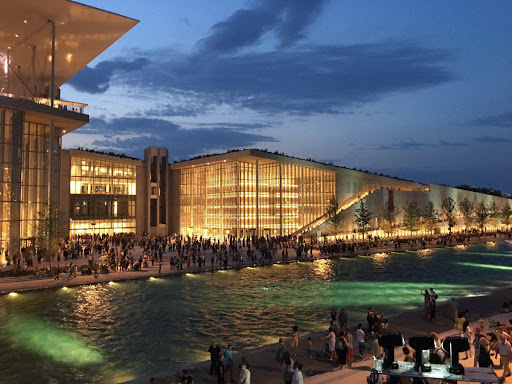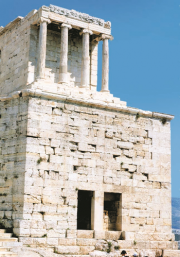Latest news
GTN – Athens Sightseeing Guide
What to See - Where to Walk
Visitor in Athens? Are you into art, history, culture, food or parties, you can find it all. Athens is highly walkable making it easy to explore its sightseeing. Get the Acropolis combo ticket (€30), which permits entry to the Acropolis and six other sites within five days and keep walking….
Athens sightseeing
Acropolis
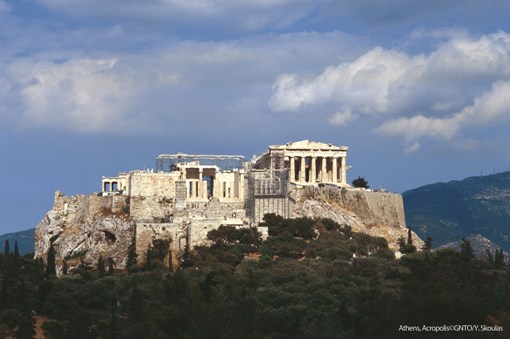
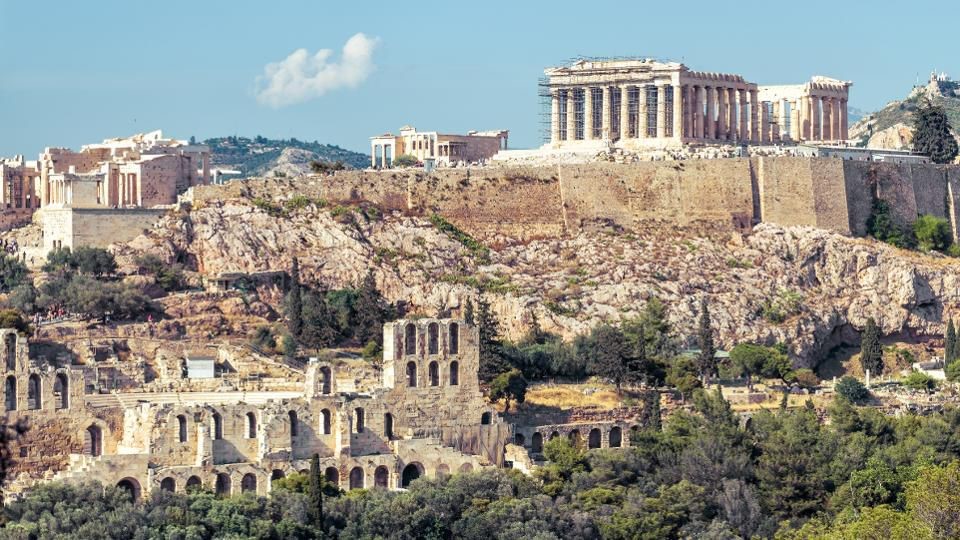
Athens, one of the older cities in the world has many monuments to show, but the highlight is Acropolis with the masterpieces of 5th century BC, the golden age of Pericles. The greatest and finest sanctuary of ancient Athens, dedicated primarily to its patron, the goddess Athena, dominates the center of the modern city from the rocky crag known as the Acropolis. The most important buildings visible on the Acropolis today – the Parthenon, the Erechthion, the Temple of Athena Nike, the Propylaea, were erected under the supervision of the greatest architects, sculptors and artists of their time. They were built in the 2nd half of 5th century by Athenians and foreigners workers, who worked on this project, receiving a salary of one drachma a day.
Parthenon
The Parthenon, dedicated by the Athenians to Athena Parthenos, the patron of their city, is the most magnificent creation of Athenian democracy at the height of its power. It is also the finest monument on the Acropolis in terms of both conception and execution. The Periklean Parthenon was designed by architects Iktinos and Kallikrates, while the sculptor Pheidias supervised the entire building program and conceived the temple’s sculptural decoration and chryselephantine statue of Athena. The temple has 8 Doric columns in each of short sides and 17 columns in the long ones.
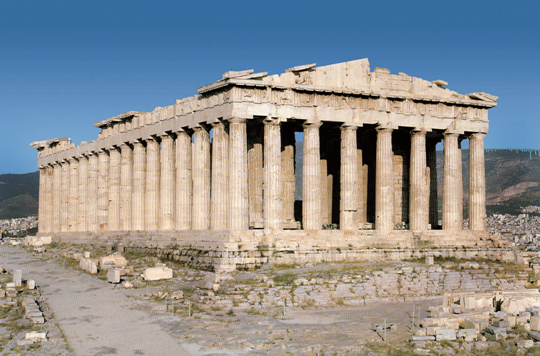
Propelaea
The Propylaea is the monumental entrance to the Acropolis. Built by Mnesicles between 437 BC and 432 BC, it ranks in architectural brilliance with the Parthenon. It consists of a central hall with two wings on either side; each section had a gate, and in ancient times these five gates were the only entrance gateway to the Acropolis, It was badly damaged in 1645, when lightning struck gunpowder the Turks had stored here.
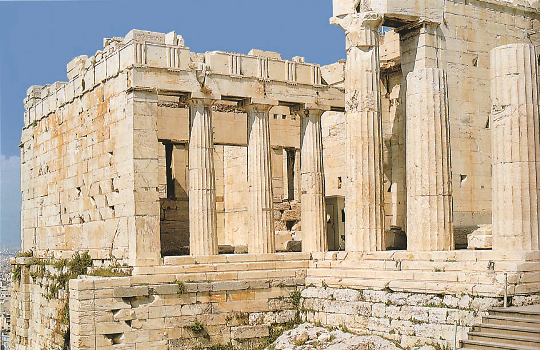
Temple of Athena Nike
The temple of Athena Nike stands at the southeast edge of the sacred rock atop a bastion, which in Mycenaean times protected the entrance to the Acropolis. The Classical temple, designed by architect Kallikrates and built in 426-421 BC, succeeded earlier temples also dedicated to Athena Nike. Pausanias (1, 22, 4) refers to this temple as that of the Apteros Nike, or Wingless Victory, and mentions that the cult statue of the goddess had no wings so that she would never leave Athens.
Erechtheion
Erechtheion is the building with the pi-shaped structure with six female statues instead of columns to support the roof. The eastern part of the building was dedicated to Athena Polias, while the western part served the cult of Poseidon-Erechtheus. The sanctuary contained the traces of the dispute between Athena and Poseidon for the possession of the city of Athens.
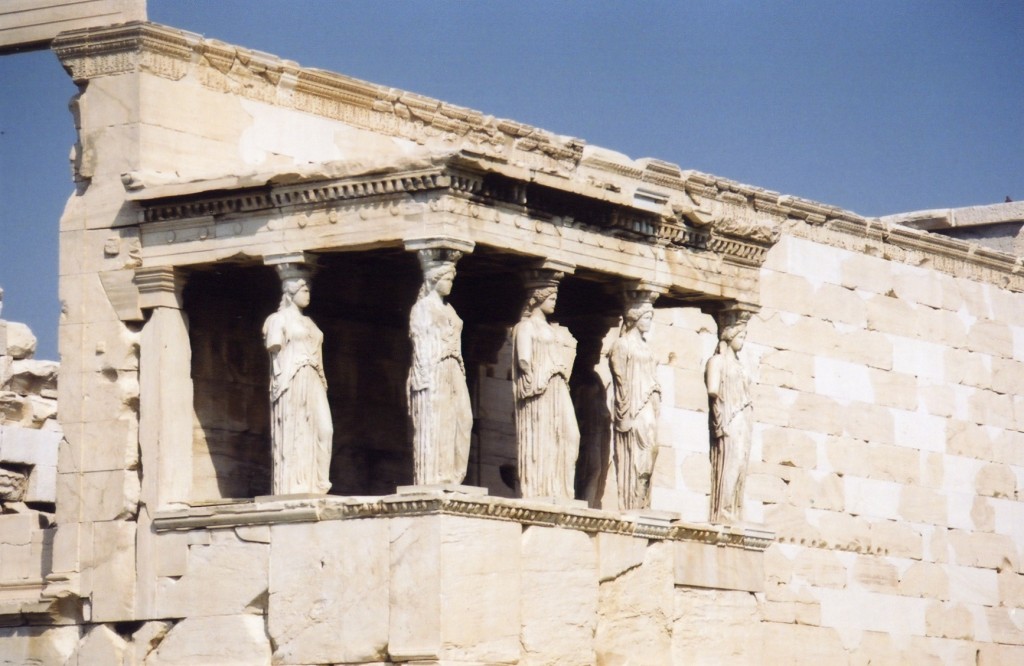
Acropolis Museum
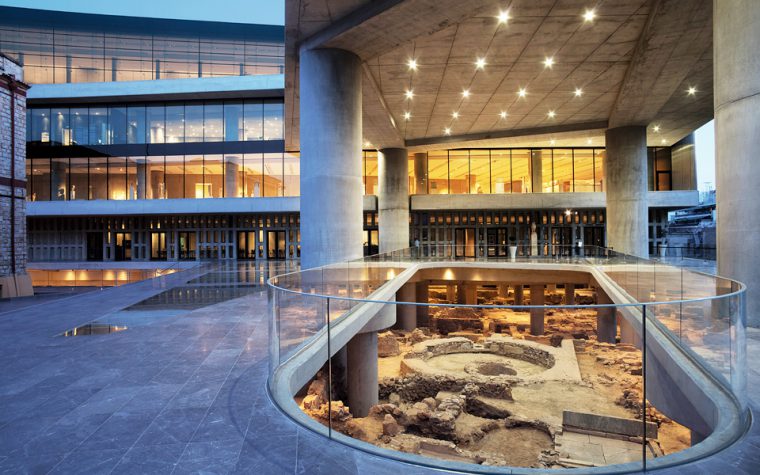
Odeon of Herodes Atticus
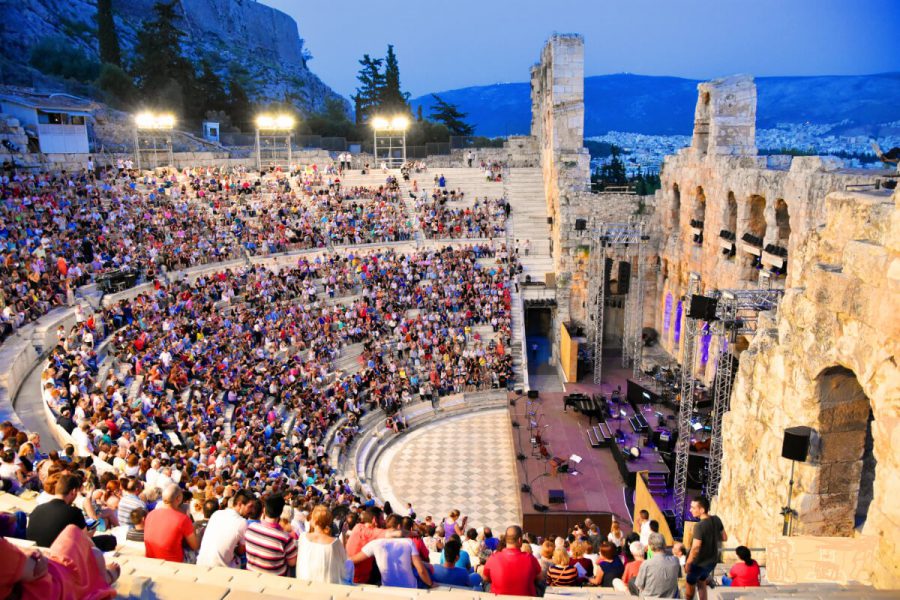
Ancient Agora
The Ancient Agora is located on the northwest of the Acropolis, a large area with ancient ruins and much greenery. The Agora, known as the ‘birthplace of Democracy’, is where you can see the parliament of the Athenian Democracy, the best-preserved temple in Greece. Ancient Agora was the center of Athens in the antiquity, the place where political gatherings, law courts were there and the place where Socrates taught and executed in the 5th century B.C.
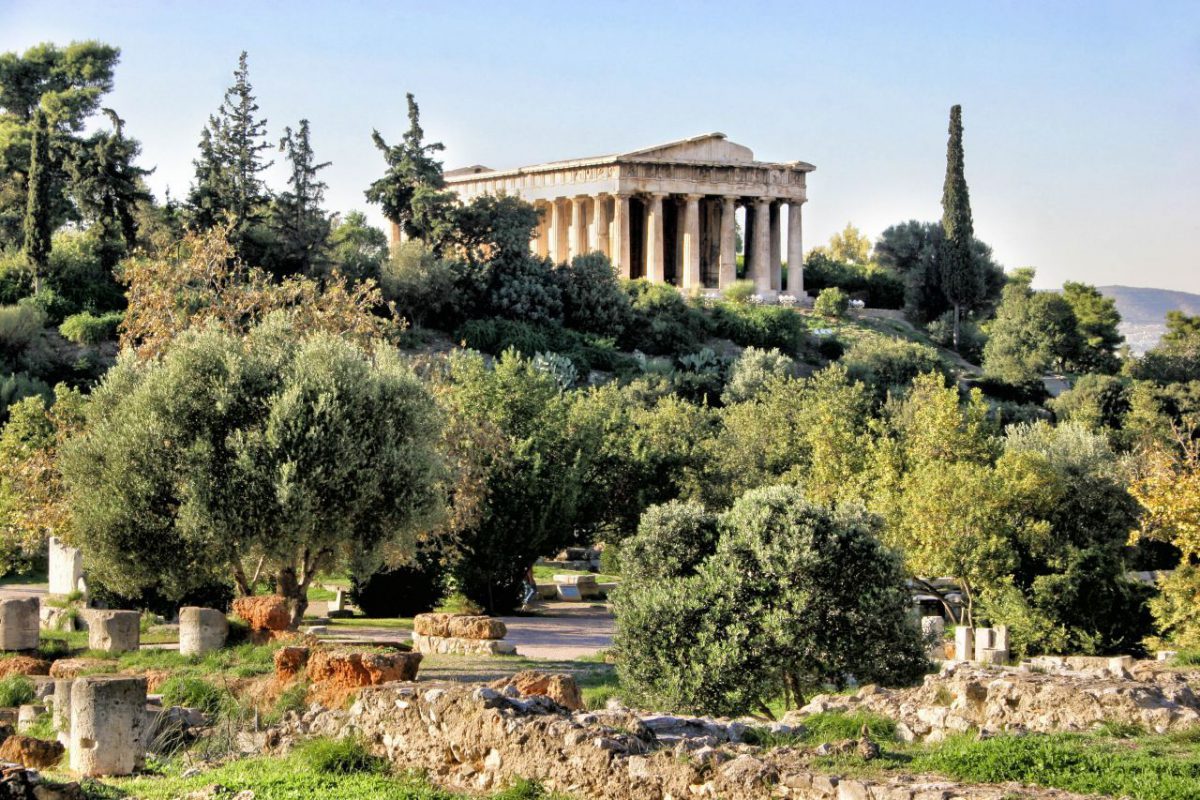
Temple of Zeus
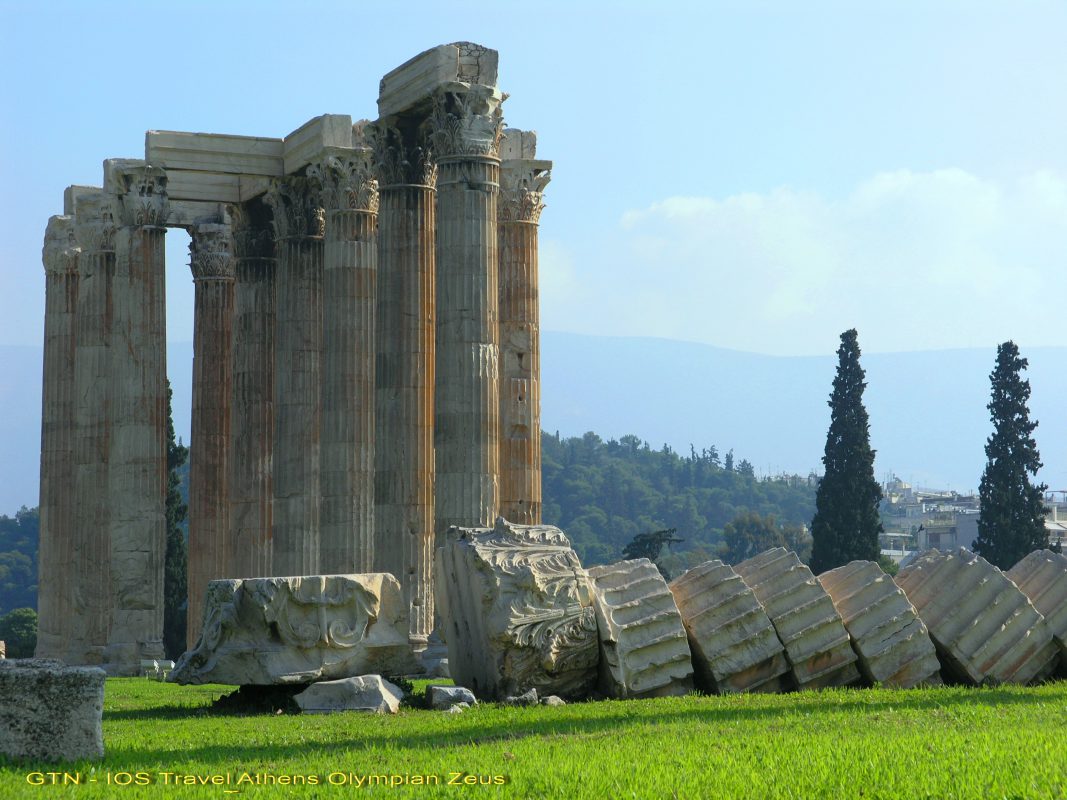
Tower of the Winds & Roman Market
The Tower of the Winds (or the Horologion of Andronikos of Kyrrhos), is a tall, octagonal building immediately east of the Roman Agora, considered the first meteorological station of the world. The building, a marvel of ancient Greek engineering was designed by a famous astronomer (Andronikos of Kyrrhos) to be an elaborate water clock (on the inside), sundial (on the outside), and weather vane (on the top). The nickname “Tower of the Winds” is derived from the personifications of the 8 winds carved on the 8 sides of the building. Remains of various conquerors, including the Roman’s agora and the Turks ruins, now surround it.
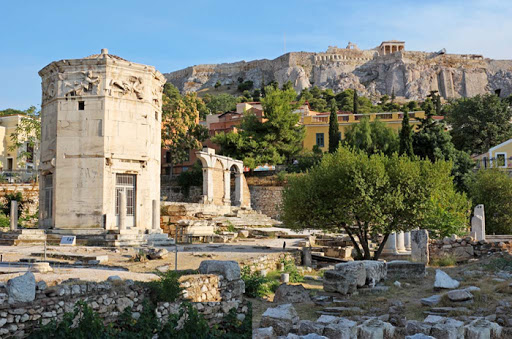
Hadrian's Library
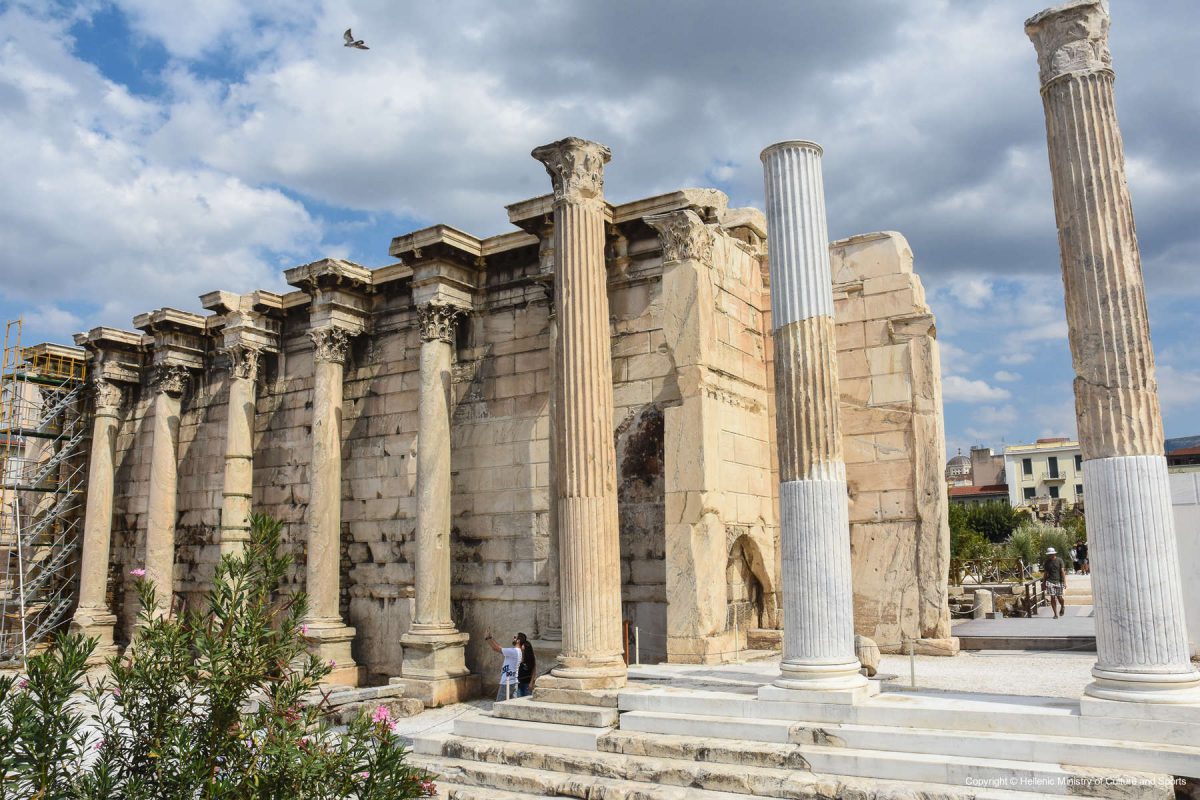
Ruins in Monastiraki area. These are the remains of the largest structure erected by Hadrian (2nd century AD). Not just a library, it also held music and lecture rooms. It was laid out as a typical Roman forum, bordered by 100 Corinthian columns with a pool in the centre. Once a library for nearly 20,000 ‘books’ this site eventually became home to churches and Turkish houses until the 19th century.
Changing of the Guards, Parliament
The regular guards changing process – wearing skirts and shoes made of wood and leather – takes place all year long every hour, in front of the tomb of unknown soldier at Syntagma square.
The ceremonial change of guards takes place every Sunday at 11:00 and it is a big tourist attraction.
The skirt of the Presidential Guard refers to the uniform of the Kleftes and Armatoloi, Greek warriors during the War of Independence in (1821) against the Ottomans. In fact, the white skirt has 400 folds to represent the 400 years of Ottoman occupation over the Greeks
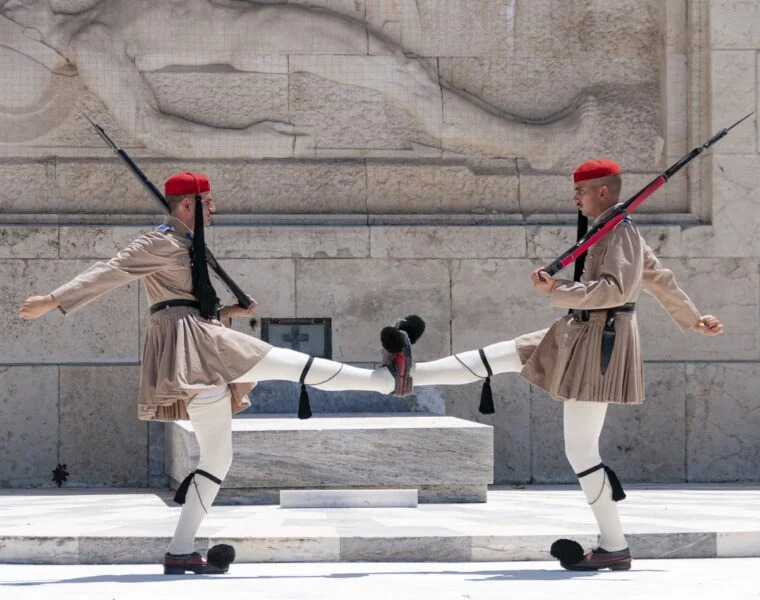
National Garden
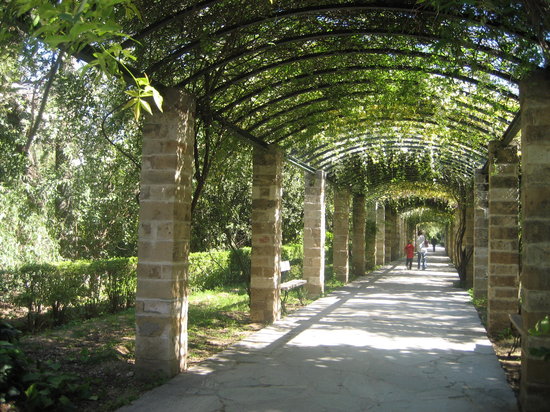
The National Garden (formerly the Royal Garden) is a public park of 15.5 hectares (38 acres) in the center of Athens. The garden was created by the first King and Queen of Greece, at a time when watering it meant cutting the water supply for the rest of the city. This beautiful oasis offers a soothing respite of greenery from the big city with many benches for picnicking, cafes, duck ponds and a small zoo.
Plaka, Monastiraki – Flea Market
My favorite neighborhood in Athens, in the shadow of the Acropolis, is Plaka, Athens old town. You can’t say that you’ve seen Athens without walking in the beautiful meandering streets of the old town, which is now scattered with wonderful ancient and neoclassical buildings, restaurants, cafés, Jewelry stores and tourist shops.
Monastiraki (little monastery) is a Flea market neighborhood in the old town of Athens and is one of the principal shopping districts in Athens. The area is home to clothing boutiques, souvenir shops, and hand made special items stores, and is a major tourist attraction in Athens for bargain shopping.
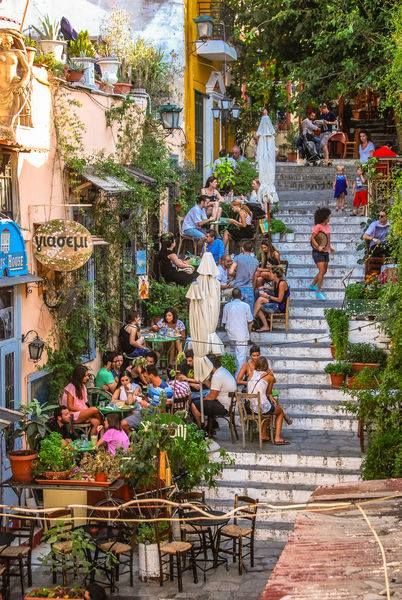
Where To Walk
Athens underground
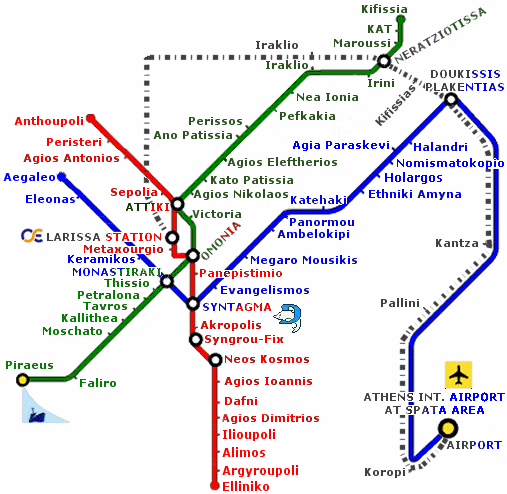
Athens and its illustrious monuments attract millions of visitors every year; few visitors however are aware that ancient treasures also lie underground. Some of these treasures are on display in many Athens Metro stations (subway) and include ancient houses, streets, sanctuaries, cisterns, workshops and aqueducts. Stations with underground ancient findings are:
Syntagma square(blue & red line), Monastiraki (blue line), Panepistimiou (blue line), Elaionas (blue line), Acropolis (red line), Aegaleo (blue line), Evagelismos (blue line), Dafni (red line)
The pedestrian street around the Acropolis
Undeniably, the most scenic walk to take in central Athens is the walk along Dionysiou Areopagitou, Apostolou Pavlou and Ermou streets where some of the city’s most significant monuments stand. This walk offers spectacular views over the Sacred Rock and Parthenon itself, to the nearby archaeological sites and the Acropolis museum. On weekends, the streets are filled with vendors, performers and artists and the atmosphere is festive. Enjoy it on your way to your hotel or one of the many restaurants you can visit in the neighborhood.
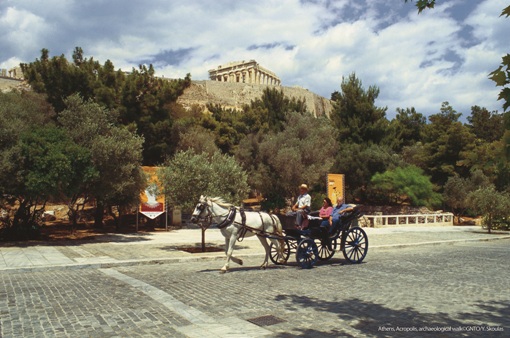
Lycabettus Hill
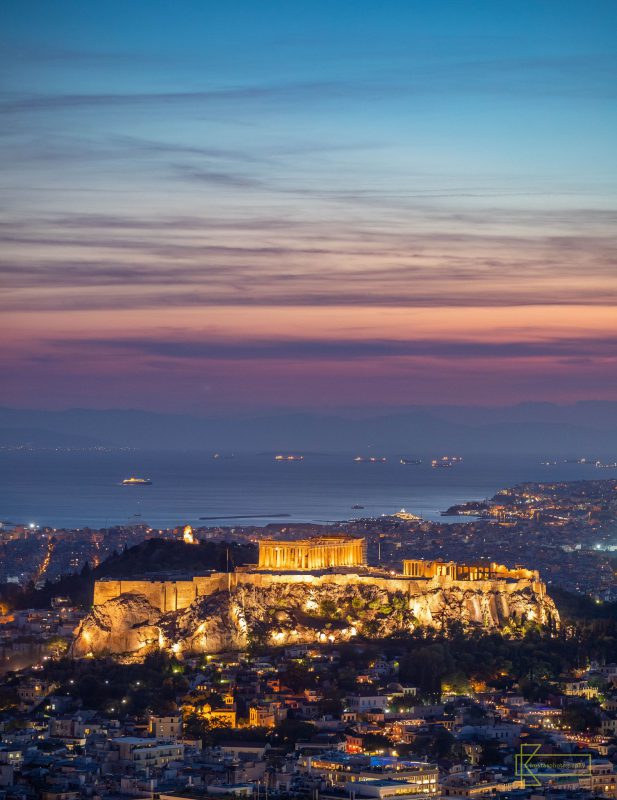
Lycabettus Hill is the highest vantage point inside Athens city. This walk is a little bit difficult but at the end you are rewarded by the fascinating vistas of Athens.
From the Syntagma sq. you follow Vassilisis Sophias street past the Benaki Museum and continue up the hill from Irodou Atikou to Kolonaki square, a square full of cafes, expensive shops, and fancy restaurants. Walk past the cafes and turn left up Anagnastopoulou Street at the top of the square and go right on Iraklitou st., then up the steps and through the small park and you are in Dexameni sq. This is one of the best spots in Athens with excellent food and ouzo. From here if you are adventurous keep walking uphill the trails and paths that crisscross the Lycabettus Hill up to the top or you take the Funicular Railway to the top. At the top there is a small church, Agios Georgios and a restaurant. From the top you can have 360° spectacular views of Athens, the ships in Piraeus, the Aegean sea, and on a clear day the islands beyond. The best time to go there is during the sunset. The cable car operates every 30 min, and the ticket price is 7 euro.
Enjoying the SNFCC park
The Stavros Niarchos Foundation Cultural Center (SNFCC) is a complex in the bay of Faliro in Athens which includes new facilities for the National Library of Greece (NLG) and the Greek National Opera (GNO), as well as the 210,000 m² Stavros Niarchos Park. While the SNFCC is technically inside, there is lots to keep you busy for a while. The green space surrounding the building is ideal for chilling on the grass or taking in the views from the Lighthouse. On summer days, join the children and play with the water games, enjoy a game of giant chess or simply relax with a book in hand. Stroll towards the artificial canal and take in the refreshing breeze, rent a bike or enjoy some drinks before a performance at the Opera
